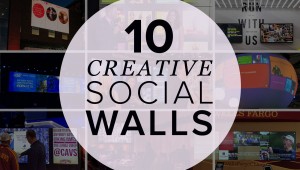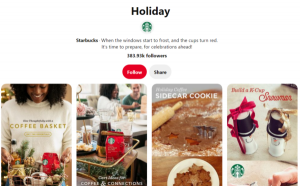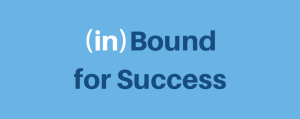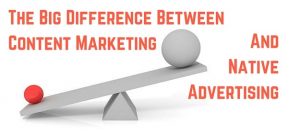 By now, reading and writing an email is a pretty mundane thing. We send and receive over 100 billion business emails per day (and that’s not even including all those “Yes, I’m alive and eating my veggies – don’t worry” emails to your mom). Email is second nature to us, and with an ROI of 4,300%, it’s also a safe marketing bet.
By now, reading and writing an email is a pretty mundane thing. We send and receive over 100 billion business emails per day (and that’s not even including all those “Yes, I’m alive and eating my veggies – don’t worry” emails to your mom). Email is second nature to us, and with an ROI of 4,300%, it’s also a safe marketing bet.
But do you remember the last time you received an email and got excited? Inspired? Blown away?
We do.
All of these emails came from apps we use and love. Coincidence? Nope!
Let us elaborate.
Why Apps Can (and Should) Send the Best Emails
As interactive pieces of software that live on one of the most personal tech devices out there, apps are a treasure trove of behavioral and profile data. This puts apps in a great position to send incredibly personalized and perfectly timed emails.
And when we say “incredibly personalized,” we mean more than just “Hi, [first name].” We’re talking about apps that dynamically customize an email’s content so it resonates with each recipient.
And when we say “perfectly timed,” we mean more than just emailing people when they’re actually awake. We’re referring to apps that send delightful things to their users’ inboxes at the right time in their relationship with their brand.
That’s why apps send the best emails ever.
4 Examples of Absolutely Rockin’ App Emails (With 12 Takeaways!)
Now that we’ve vouched for the awesomeness of app emails, it’s time to share some examples. Whether it was their impressive design, their spot-on message, or their opportune timing, the following app emails totally knocked our socks off.
1. Etsy’s “July 4th Holiday Inspiration” Email

Why We Love This App Email
- The subject line is short, sweet, and relatable because we all have a tendency to procrastinate from time to time (been there, done that, right?)
- Delivered on July 1st to inboxes, just in the nick of time!
- The email’s layout of colorful, cascading images is pleasing to scroll through
- Festive text is used to both organize the email and help convey the theme
- Decor images deep link to relevant app screen while food images drive people to Etsy’s online blog thus allowing users to connect with Etsy on multiple channels
- The CTA is unique and exciting
- The email is not blatantly promotional; instead, it focuses on creating an Independence Day to remember
- The email was segmented and sent only to app users living in the United States
Coordinating a get-together can be stressful – even in the summertime. There are about a million things you need to consider if you want to throw that Pinterest-perfect weekend soiree for your friends and family. How should I decorate? What should I cook? Which games will we play? What about dessert?
Last month, Etsy’s app stepped in to help make party planning less painful. A few days before July 4th, Etsy sent its US-based app users a complete Independence Day guide, which was chock full of inspiration, ideas, and American patriotism designed to pump us up for the upcoming holiday.
The bright and cheery visuals immediately captured our attention, the clever national anthem references filled us with pride, and the collage of both in-app products (party supplies) and website content (recipes) showcased Etsy’s versatility. This email was designed to inject creativity into its users events, not just sell handmade goods. That’s why there are no prices listed – this email is not selling in-app products, it’s selling the experiences you can create with them.
As an added bonus, who doesn’t love a fun CTA that breaks the traditional “Shop Now” or “Buy Now” mold? Etsy’s “Cue the Fireworks” CTA makes you want to celebrate and throw one heck of a party.
Key Takeaway #1: Segment your audience by profile data
Getting your targeting right is essential to earning a high email open and click rate. By segmenting users based on profile fields (like “location” or “country”), you can ensure your seasonal emails don’t seem stale or out of place.
Key Takeaway #2: Use high-quality images
A beautiful picture is better than a thousand eloquent words. Make stunning visuals an essential part of your email.
Key Takeaway #3: Showcase your brand/app’s experience
Don’t simply send an email that looks like a product catalog. Instead, pair things together to paint an aspirational picture of what people can do with your app.
2. Reserve’s “New App Feature Alert” Email

Why We Love This App Email
- Subject line is succinct and highlights Reserve’s goal of improving its app based on feedback
- Prominence of Reserve’s logo and use of brand colors and typeface builds brand recognition
- The header image and text completely encapsulate what the email is about (dining out happily with friends)
- The copy is to the point, easy to read, and centers on the user benefits of this new app feature
- Minimal text, a single image, good use of white space, and one main CTA give this email a razor-sharp focus
- By proudly announcing new app features, this email elicits re-engagement and drives app traffic
Apps are not static; they continually evolve with their users and the mobile landscape. But how do you inform people about a new app feature or a cool new upgrade? Do you wait for them to stumble upon it when they re-launch your app? Or, can you take a more proactive approach?
Reserve’s app brilliantly uses email marketing to unveil big new features. For example, when Reserve added check-splitting functionality to its dining concierge app, it sent the above email announcement to its users.
We love this email because everything about it, from the minimalist design to the brevity of the copy, is centered on a clear purpose: to create awareness about a feature release and consequently encourage people to try it out in their app. There’s no jargon, distracting visuals, or secondary offers. This email isn’t full of corporate verbiage – it sounds polite and human as it describes how effortlessly you can dine out with others. After all, we do expect apps to know us, listen to us, and speak our language.
Key Takeaway #4: Announce major app changes via email
One popular use case for emailing your audience is to inform them of significant app updates. When a new feature rolls out, actively tell people how it’s going to improve their lives and make your app better. Invite your users back into your app to test out the new functionality, submit feedback, or give additional suggestions. Make sure your users know that their opinions matter.
Key Takeaway #5: Write concise copy that resonates with your audience
Don’t be afraid to keep your app emails simple. Just because you can make your emails long, doesn’t mean you should unnecessarily. Find one main point you want to drive home and communicate it plainly in a tone and voice your users will understand.
3. Zillow’s “Upcoming Open Houses” Informational Email

Why We Love This App Email
- The subject line sums up the email ever so nicely (it answers the “What?” “Why?” and “Where?” questions)
- This email was delivered around 5:00 PM on a Friday, just as people start thinking about their weekend plans
- Every important detail about the open houses is listed in a clutter-free chart
- Bold font colors make time-sensitive information stand out right away
- The CTA teases new in-app content to drive app launches
Lets face it: although we love our apps, we don’t spend every hour interacting with them. As a result, we’re bound to miss things here and there, which can suck – unless apps email us with important news in real-time.
That’s exactly what Zillow did. Even though this email doesn’t have a groundbreaking design, it earns a ton of points in our books for being one of the most useful and relevant emails we’ve ever received.
How? Because Zillow paid attention to the types of properties we searched for and the neighborhoods we browsed inside its app. Then, it used that in-app behavioral data to find similar listings (less work for us!) and emailed them to us as soon as those properties scheduled open houses (so convenient!). Plus, the email was neatly organized and contained all the key details about each piece of real estate.
In short, Zillow’s app uses email to make sure latent app users never miss out on important in-app events. It monitors new listings and emails them to interested buyers as soon as they see a dream property match.
Key Takeaway #6: Segment your audience by in-app behavior
People turn to apps when they want to efficiently accomplish a specific task. So, pay attention to what your users do inside your app. What screens do they visit? What do they click? What actions do they take? Use this data on in-app activity to segment and personalize your email campaigns.
Key Takeaway #7: Provide real value
App emails don’t always need to be self-promotional. Send emails that are intrinsically valuable in solving your users’ problems. Send emails that help users achieve their goals.
Key Takeaway #8: Surface the freshest in-app content
If your app is a content hub (like a lifestyle, news, or media app) you know that things change quickly. Information goes out of date and new information rises to the forefront. Turn to email marketing to keep your users in the loop of key in-app happenings so they never loose out on taking action.
4. Keep’s Action-Eliciting “Welcome Gift” Email

Why We Love This App Email
- Email header is conversational and gets us to reflect on our initial app browsing experience
- The horizontal and hexagonal arrangement of images is a clever way of displaying Keep’s expansive product portfolio without taking up precious page space
- This email is both welcoming and nurturing because it encourages new users to complete a key in-app event (i.e. make their first purchase)
- It’s well designed and well branded
- The copy is straightforward, crisp, and strategically placed above the fold (so it’s visible without needing to scroll)
- It passes the “blink test” with flying colors
Welcome emails can be so… dull. Often, they just regurgitate an app’s benefits and contain nothing compelling for the recipient.
Keep’s refreshingly user-centric welcome email smashes this mold. Right from the get-go, Keep creates a wonderful first impression by giving new users a gift. And who doesn’t like free stuff?
This email starts off by posing an innocent question, which gets us to think about our very first app interaction. Then, as we’re reminiscing about all the cool products we checked out inside the app, we’re given a discount code to spur the purchase. This is a great tee up that can turn new users into valuable customers at the onset.
What’s more, the unique arrangement of images nicely borders the email body and draws the reader’s eyes to the main message. It’s also an ingenious way to showcase the diversity of Keep’s curated collection without making the email seem too long. Needless to say, we’re huge fans of the clean and crisp layout because it’s easy to digest, easy on the eyes, and it makes it easy to remember the key point.
Key Takeaway #9: Give welcome emails a bigger purpose
Don’t send dry and pointless welcome emails. Make them action-oriented and gently nudge new users into converting. For example, give them a discount code, a freebie, or another enticing promotional offer.
Key Takeaway #10: Put your main message above the fold
What’s the most important thing you are trying to tell your app users? Put this above the fold in your email so people see it right away without needing to scroll down.
Key Takeaway #11: Never underestimate the design importance of whitespace
Brands can get fairly creative with their email designs, but you should always be mindful of preserving whitespace. Whitespace creates balance and harmony between the elements in your email.
Key Takeaway #12: Use the blink test
If you stared at your email for 3-5 seconds and closed your eyes, could you remember what it’s about? Use the blink test to evaluate whether or not you’re effectively getting your point across. Then, tweak as necessary.
Send App Emails That Wow
Apps need email. Email marketing allows mobile marketers to send users longer form content and it also helps you reach latent users who have disabled push notifications. Put another way, apps need email to retain their users and build deeper relationships.
But email marketing also needs apps because apps have the power to send the best emails.
With rich in-app behavioral and profile data at your fingertips, there’s simply no reason to send app emails that are just okay, average, or meh.
Customize your content. Fine-tune the messaging. And nail your timing. Send app emails that rock.
Your app has conquered the smartphone. Now own the inbox too.
(143)
Report Post





